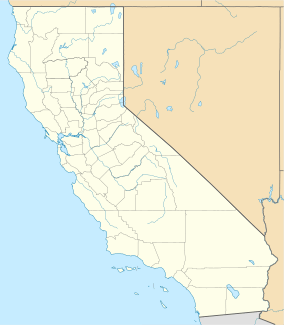Younger Lagoon Reserve facts for kids
Quick facts for kids Younger Lagoon Reserve |
|
|---|---|
| Location | 100 Shaffer Road, Santa Cruz, California |
| Area | 72 acres (0.113 sq mi) |
| Governing body | University of California, Santa Cruz |
| Website | http://ucsantacruz.ucnrs.org/reserves/younger-lagoon/ |
The Younger Lagoon Reserve is a special natural area in Santa Cruz County, California. It covers about 72 acres (28 hectares) along the northern coast of Monterey Bay. This reserve is owned by the University of California and is used for important teaching and research. It is right next to the Long Marine Laboratory.
This amazing reserve includes a small beach, a lagoon that fills up at certain times of the year, wetlands, and open coastal grasslands. You can also find cool natural features like a tall rock formation called a sea stack, sea caves, and tidepools where ocean creatures live.
Contents
History of Younger Lagoon Reserve
The Younger Lagoon Reserve was given to the University of California in 1972. Donald and Marion Younger, whose family had owned land in the area for over 100 years, donated it. They wanted to help build the Long Marine Laboratory and protect the beautiful lagoon.
In 1987, the reserve became part of the UC Natural Reserve System. This system helps protect natural areas for science and education. Later, in 2008, the University added 47 more acres of nearby farmland to the reserve. This new area is called Terrace Point.
Geography and How the Lagoon Works
The Younger Lagoon Reserve sits on the lowest part of the coastal land in Santa Cruz. This land was formed by ancient ocean levels. The lagoon itself was created by a coastal stream. Over time, ocean waves carved out sea caves under the coastal cliffs, which helped form the lagoon.
The lagoon has a "Y" shape and is seasonal. This means it fills up with water during the winter and spring rains. When big winter storms happen, they can wash away the sand barrier at the lagoon's mouth.
When this sand barrier breaks, all the water in the lagoon drains out into the ocean very quickly. Then, ocean water flows into the lagoon. After a while, waves build the sand barrier again. This allows rain and runoff to fill the lagoon with fresh water once more.
Wildlife and Plants at Younger Lagoon
Younger Lagoon is home to many different plants and animals. The most common fish in the lagoon is the tidewater goby. This small fish is considered endangered, meaning it needs protection to survive.
Around the lagoon, you can find areas with willow trees, plants that grow in sand dunes, and marsh plants like pickleweed. Many animals live here, including brush rabbits, striped skunks, coyotes, and even bobcats. On the beach, you might see shorebirds like willets and sanderlings looking for food.
Helping Nature: Restoration Efforts
Students and interns at Younger Lagoon work hard to help the environment. They plant native plants around the lagoon and in the coastal grasslands. This is called habitat restoration.
They also do experiments to bring back native plants on cliffs that were covered with non-native plants like iceplant. They also work on areas that used to be brussels sprout fields. Their work helps scientists learn the best ways to restore natural habitats. Sometimes, invasive plants like Cape Ivy need to be removed because they can harm native plants.



